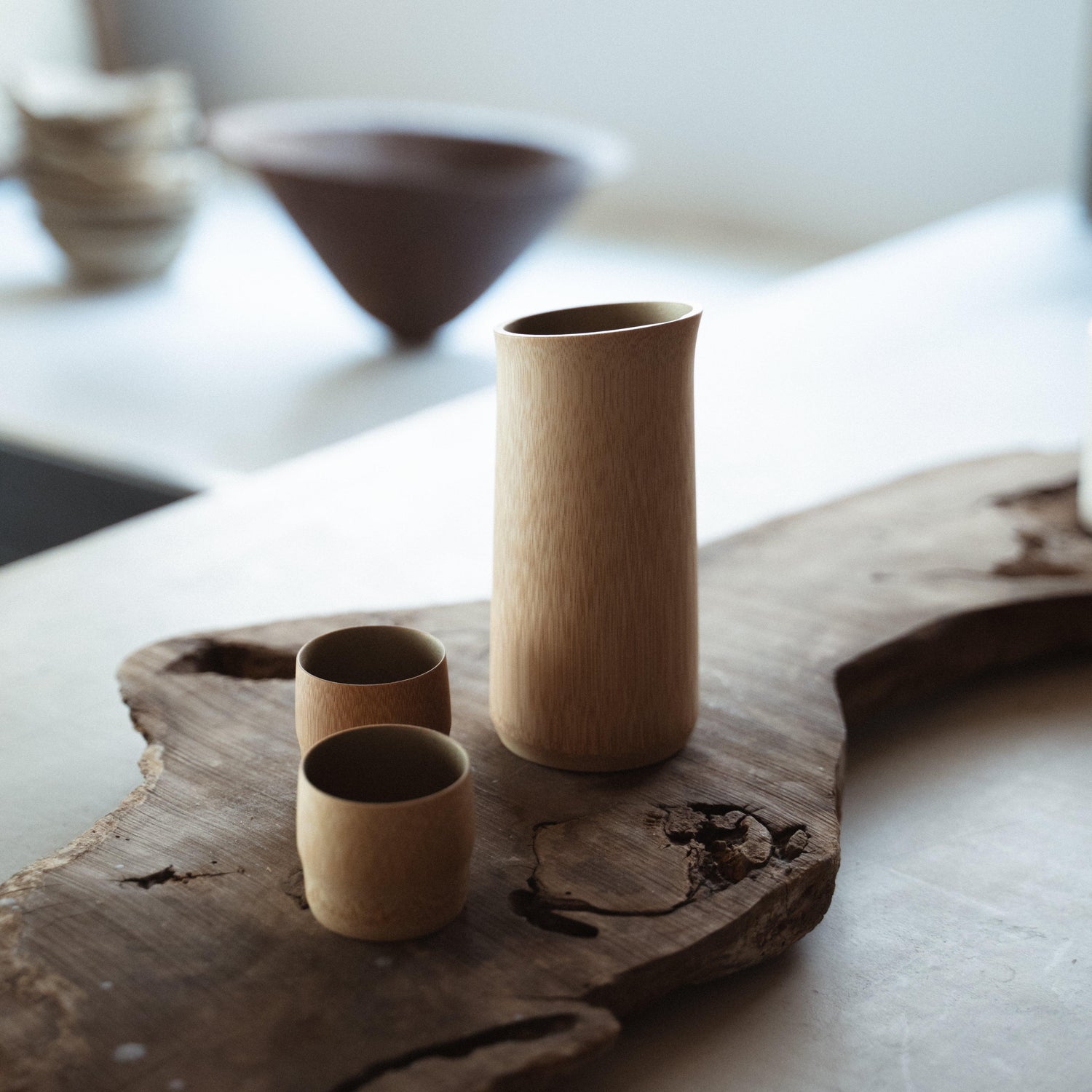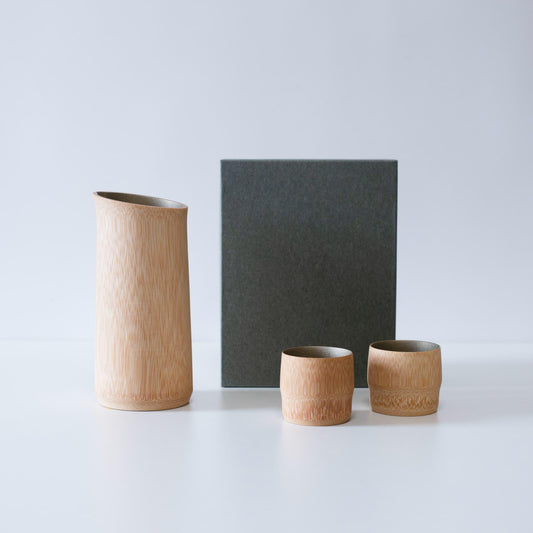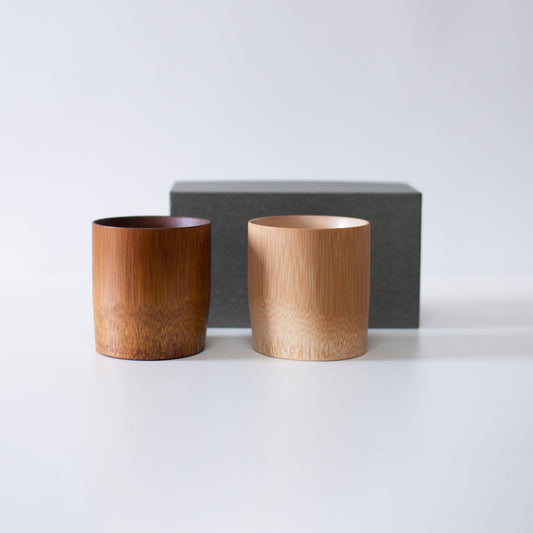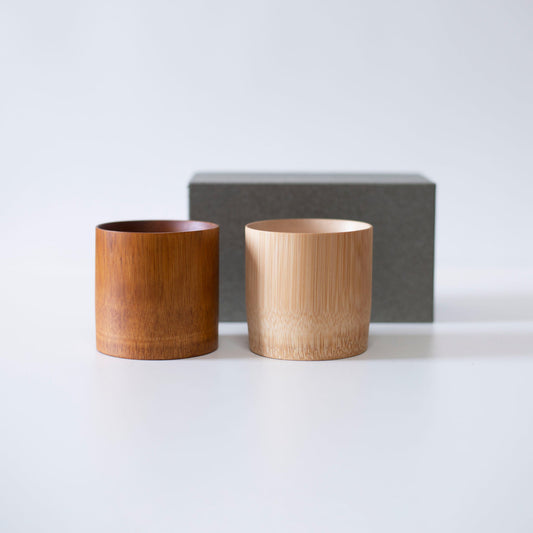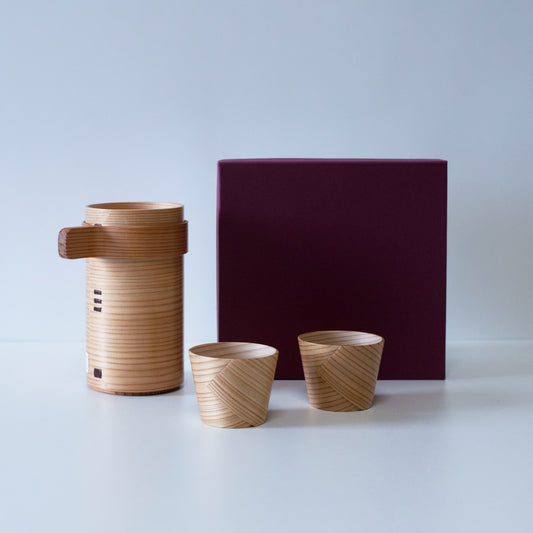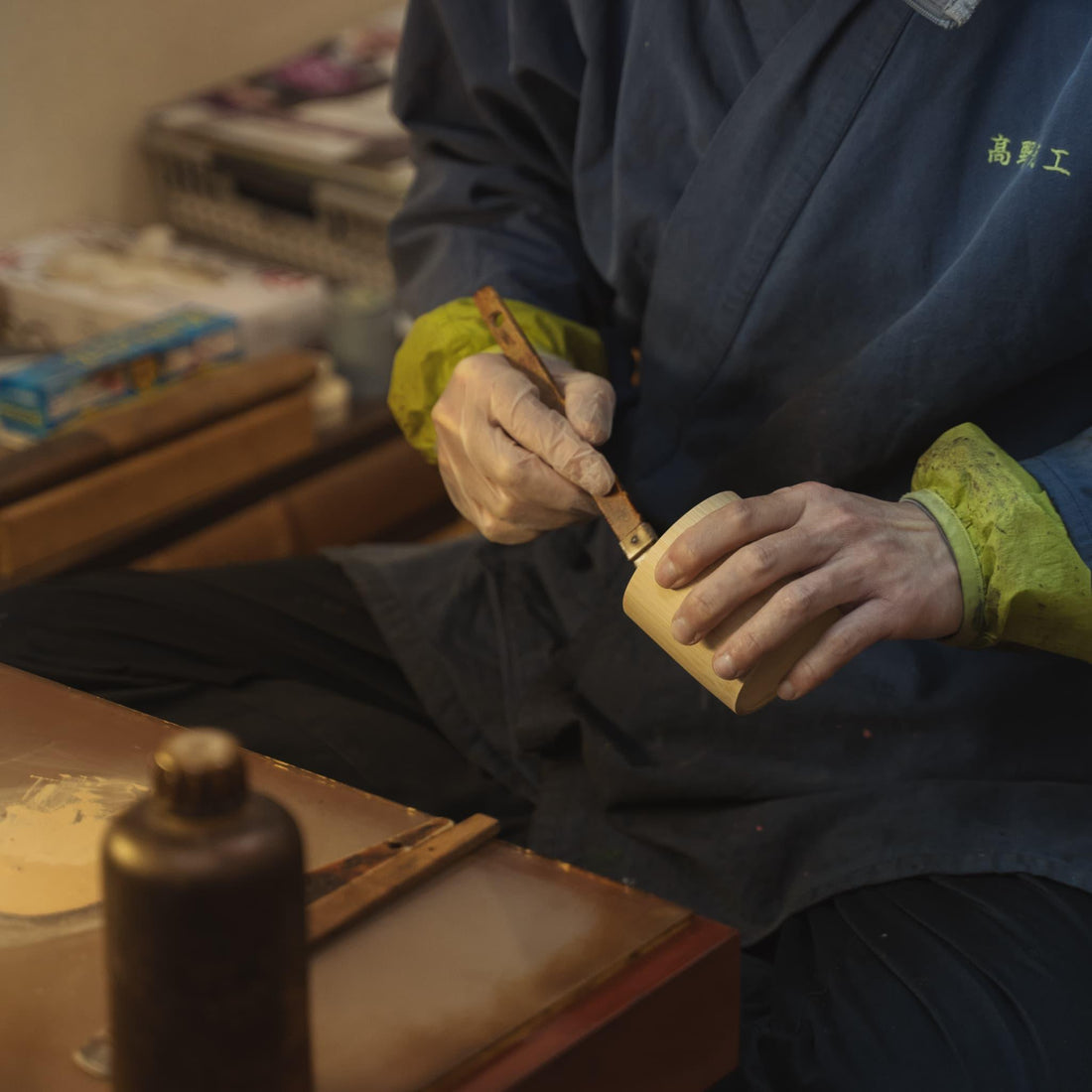
The Journey of Creating Bamboo Products at Takano Chikko
Share
Rooted in Nagaokakyo City, Kyoto Prefecture, Takano Chikko blends traditional techniques with innovative designs to create bamboo crafts. Surrounded by mountains, this area is known for its rich natural environment that nurtures thick, high-quality bamboo. Here, we introduce the lives of people breathing with bamboo and their sustainable product manufacturing process.
Table of contents
Cultivation of High-Quality Bamboo

Kyoto's drastic climate changes provide the ideal environment for growing sturdy and beautiful bamboo. Artisans at Takano Chikko select 4 to 5-year-old bamboo grown in this area and harvest it from autumn to late autumn. Afterward, the bamboo is naturally dried and then heat-treated, followed by a slow drying process over several years. Through this lengthy process, bamboo not only becomes visually appealing but also gains durability and flexibility. Below, we detail the comprehensive process, including the bamboo harvesting.
From Bamboo to Finished Products
Harvesting
The first step in creating bamboo products begins with harvesting green bamboo between September and November. During this period, the bamboo stops absorbing water, reaching its optimal state. Artisans carefully harvest selected bamboo at this precise timing.
Branch Removal
Harvested bamboo undergoes a branch removal process before transportation. This crucial step involves removing bamboo branches to facilitate later processing.
De-oiling
Before drying, the bamboo's surface oil is scorched with fire and carefully wiped off. This process is essential for properly removing moisture from the bamboo, ensuring smooth processing later on.
Storage
After de-oiling and sun-drying, the bamboo is then stored in a warehouse for several years to dry thoroughly. This long-term storage ensures the bamboo reaches its optimal state while also preventing insect damage.
Konasu
Once drying is complete, the bamboo enters the first step of manufacturing called "konasu," where the long bamboo is roughly cut according to its purpose.
Lathe Cutting
For making bamboo cups or glasses, bamboo set on a lathe is measured and cut to the desired size. This precise operation determines the product's standards.
Carving
During the carving process, the bamboo is shaped into the form of a glass. Natural bamboo is thick at the drinking edge, so it is thinned and hollowed out to increase capacity.
Polishing
The rough surface of the bamboo from carving is smoothed with sandpaper. This step highlights the beautiful fibers of the bamboo, bringing the product closer to its final shape.
Coating
Finally, the completed bamboo products are enhanced with lacquer by skilled craftsmen. Repeated lacquering not only increases durability but also adds multiple colors to the product.
The manufacturing process of bamboo products harmonizes with nature's rhythm, creating artworks through the skilled techniques of artisans. This series of processes brings color and functionality to our lives with bamboo products.
The Potential of Bamboo
Bamboo holds much potential with its beauty and strength. Strength tests show that bamboo is about 1.5 to 2 times stronger than regular solid wood. It can be used as mature wood in 3 to 5 years, has a high ignition point, and is relatively resistant to fire. Takano Chikko utilizes these characteristics to create products that match modern needs.
Nurtured by Kyoto's nature and combining traditional skills with innovative approaches, Takano Chikko is leading Japanese bamboo crafts into new territories. Their efforts in sustainable bamboo management and processing produce beautiful, durable bamboo crafts, symbolizing the harmony between tradition and modernity.













